On October 7, 2022, on his way back home from Czechia, Turkey’s President Recep Tayyip Erdoğan announced that his government is going to work on a new regulation concerning “the Turkish family structure” and “LGBT”[1]. This happened shortly after the stream of Kemal Kılıçdaroğlu’s video at his house suggesting his party CHP, the Republican People’s Party, will “relieve the wounds of hijab”[2] in Turkey’s Republican history. The violation of LGBTQIA+ rights redressed another discourse of President Erdoğan about a new legislative body within the constitutional amendment to prevent LGBTQIA+ individuals from ruining[3] the Turkish family structure and its values[4].
“(T)hey have introduced LGBT in society recently. They try hard to degenerate our family structure with LGBT. So we will do what we need to do. We already know who supports LGBT.”
This was not the first time President Erdoğan has mentioned LGBTQIA+ individuals and their rights, however, this can be regarded as the first time that the country’s president distinctively articulated possible legislation for LGBTQIA+. Retrospecting from the year before the denunciation of the Istanbul Convention by Erdogan in March 2021 to the end of the third quarter of 2022, it can be seen that the President and government representatives’ discourse built on LGBTQIA+ individuals has been changing in a more conservative way to draw attention to religious sensibilities by emphasizing the “values of Turkish family structure.” This article will scrutinize religious values through the perspective of gender equality and the context of gender-based violence (as stated and interpreted in the Istanbul Convention) while discussing where the gender norms of Turkey and the current political discourse on LGBTQAI+ rights meet by mentioning the underlying biases that maintain the violation of human rights for LGBQIA+ in Turkey. This paper will scrutinize the contexts of gender and hegemonic masculinity, discuss gender and religious norms in Turkey, and review the political language of the State along with the religious discourse that underlies biases to help perpetuate human rights violations for LGBTQIA+ as they have been criminalized by Turkey’s government. I will first discuss the “Turkish family structure” (as emphasized by the State representatives) by using the contexts of gender and performativity in relation to reconstructing the patriarchal discourse. Secondly, I will associate the criminalization of LGBTQAI+ individuals with the religious discourse spread through the media by religious leaders, the President, and his government of Turkey. Finally, I will try to demonstrate the violation of LGBTQIA+ rights in Turkey due to the religious discourse built by the AKP regime.
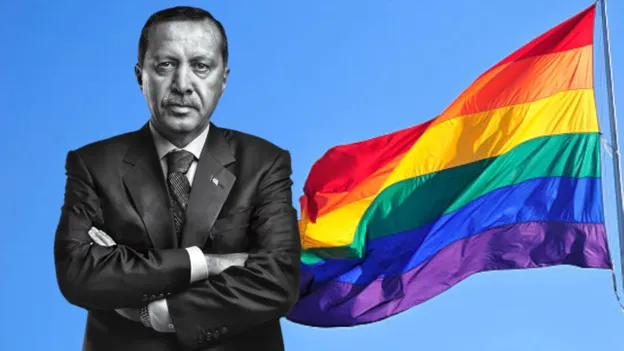
In order to perceive, understand and analyze the concept of “Turkish family structure and its values,” one has to evaluate socio-cultural, socio-economical, and religious elements of sociology and anthropology more than other elements while studying history and politics. However, being the subject of all the above; authors, artists, and independent researchers in the country sustain accurate information by utilizing the first person singular. I personally think that gender in Turkey is cis-male[5] and its biological sex is male as well, and it has been enjoying the privileges offered by the patriarchal power since the beginning of the republic, and in despite of the right-left, democratic-dictatorial, and Kemalist-Islamist dichotomies challenging each other for decades, most families are centered on male obedience. Turkish family structure is a concept that offers a series of masculinity; its values are repression oriented. Imagining the State as an image of the average Turkish Family says a lot about power relations, the way masculinities process, and their relationship with religion and belief systems.
In Masculinities, Connell states that men, differing in the contexts of experiences, bodies, countries, cultures, and economical statuses, are positioned in different ways in terms of their masculinities in order to build power, therefore, we need to talk about masculinities instead of single masculinity. Connell takes the term hegemony from Antonio Gramsci and concentrates on masculinity (masculinities). Differentiating the term hegemonic masculinity from patriarchal masculinity, Connell mentions that hegemonic masculinity is in constant performance through the use of gender practices in order to stay in power, rebuild power and make certain of women’s obedience by making male dominance sustainable (Connell, p.77). In the definition of hegemonic masculinity, we can think of the subjects possessing potency and power instead of male dominance, and the subjects incapacitated in terms of gender practices instead of female obedience. Connell exemplifies the mentioned subjects by stating that heterosexual males dominate homosexual males in America (Connell, p.78). In Gender and Power: Society, the Person and Sexual Politics (1987), Connell defines hegemonic masculinity, and more importantly, he says what it is not:
In the concept of hegemonic masculinity, ‘hegemony’ means (as in Gramsci’s analyses of class relations in Italy from which the term is borrowed) a social ascendancy achieved in a play of social forces that extends beyond contests of brute power into the organization of private life and cultural processes. The ascendancy of one group of men over another achieved at the point of a gun, or by the threat of unemployment, is not hegemony. (…) Second, ‘hegemony’ does not mean total cultural dominance, or the obliteration of alternatives. It means ascendancy achieved within a balance of forces, that is, a state of play. Other patterns and groups are subordinated rather than eliminated. (p.184)
Accordingly, hegemonic masculinity is a performance directed to subordinate non-males within the established social order instead of eliminating them, and it is to have a voice in determining the dynamics of gender order. In gender order, hegemonic masculinity does not only subordinate women and LGBTQIA+ individuals, but it forms a hierarchy among men as well. Hegemonic masculinity provides the organization of private life and cultural processes by making male power absolute through the construction of terms such as physical and economic power, status, family, and military service. In short, hegemonic masculinity helps increase the action, sustainability, and effectiveness of power for men instead of creating powerful masculine subjects within the social order (Horzum, p.94).
Connell mentions three basic mechanisms that facilitate the process of the sexuality system; the first one is “the sexual division of labor,” the ability to earn the family’s keep; the second is the gender system working as a network of power relations, and the third is “cathexis:” social relations shaped by sexuality” (Connell, p.98). Connell mentions four different masculinities in these three mechanisms: “hegemonic masculinity (hegemony),” “subordinated masculinity (subordination),” “complicit masculinity (complicity)” and “marginalized masculinities (marginalization)” (Connell, p.110). With Connell’s own terms, “complicit masculinity” does not have an active role in the construction of masculinity ideology like hegemonic masculinities but they make use of the subordination of women, other men or LGBTQIA+ individuals on gender level by approving or not protesting patriarchal practices. Complicit masculinities roam around hegemonic performatives without adopting them, so to say; they make use of patriarchal share without dirtying their hands (Connell, p.110). According to Connell, the majority of men enter this category. “Complicit masculinities” are the men who have the possibility of becoming feminists by changing sides, preferring to challenge women’s subordination and oppression and becoming “objector men.” The concept of marginalized masculinity, which Connell shaped in Masculinities and discussed again in Men & the Boys (2000), is expressed as the exclusion of some men due to some features such as class, ethnic origin, age, or race within the context of hegemonic masculinity ideals. According to Connell, even if men in question adopt hegemonic masculinity ideals and provide the best representation of these ideals, they would be marginalized because of the mentioned features they have by nature (Connell, p.30-31). Connell also talks about a Whole New World masculinity dynamic; it is shaped around the social reproduction of hegemonic masculinity passing from father to son or from elder brother to younger brother. The moment of engagement is the moment when the son takes hegemonic masculinity from the father or elder brother and at this very moment, hegemonic masculinity performance appears in the son. Confronting feminine and masculine values, the son learns that he must show affection to the feminine, and in doing this; he regards the female as the other from a physical distance. This dynamic can work in different ways and there can be different construction results for the son and young man. The result, which can be separated from hegemonic masculinity (moment of separation), can make man regard himself as de-subjectified. The annihilation of hegemonic masculinity can happen to be semi-homophobia or vagueness against feminism. The annihilation of hegemonic masculinity is what men and the ones who do masculinity performance desire and fear (Connell, p.121-37).
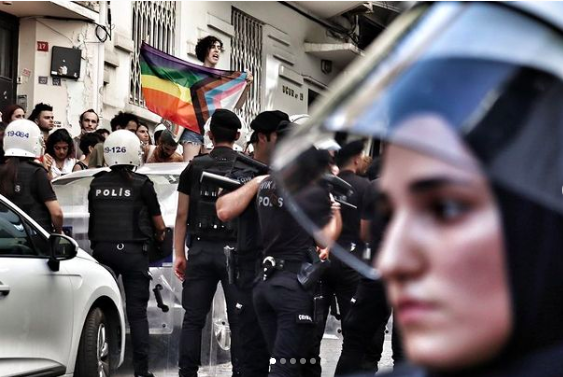
Deriving from Michel Foucault’s interpretation of discourse as a way of organizing knowledge that structures the constitution of social (and progressively global) relations through the collective understanding of the discursive logic and the acceptance of discourse as a social fact, the discourse of political leaders, presidents, representatives, opposition leaders, and many others publicly spreads throughout the media channels, carrying an effect on nearly all power relations. Both in Gender Trouble and her sequel work Bodies that Matter (1993), Butler scrutinizes and discusses performance and performativity. If a performative act must be constantly repeated to be effective, then a performative act has the function to produce what it declares. The performative acts that can actualize this function are in a socially organized and approved practice, and it cannot produce a declaration the organized practice denies. “Indeed, a performative act apart from a reiterated and, hence, sanctioned set of conventions can appear only as a vain effort to produce effects that it cannot possibly produce” (Butler, 70), in other words, the realization of performatives which do not obey the rules of gender order would not be allowed by the mentioned order. This can be called a social process. When this process is thought to be obtained through existence’s reference to power, the process of sedimentation, or what we might call materialization, would be a kind of citationality, the acquisition of being through the citing of power, a citing that establishes an originary complicity with power in the formation of the “I.” (Butler, p.xxiii). In other words, hegemony will problematize the things it assumes as valid, except for the acts, discourses, bodies, tendencies, etc., and push them to the queer field, which is a foreclosed field.
The power of the religious discourse on Turkey’s politics can be analyzed with the help of overviewing the process of Turkey’s designation from the Istanbul Convention. As it was pointed out in Article 3 of the convention and explained in the 43rd and 44th paragraphs of the Explanatory Report to the Council of Europe Convention on preventing and combating violence against women and domestic violence, the terms “gender” and “gender-based violence” can be pointed out as the “reasons” for withdrawing from the Istanbul Convention, for what they represent is against Islamist Turkish values[7]. As the emphasis on the values of the Turkish Islamist family prioritizes itself, for it is simply a patriarchal structure driven by hegemonic masculinity performatives that disregard the basic human rights and equal wage rights for women along with non-binary gender-order, and because the non-heterosexual presence of a being prioritizes itself, the involvement of religious leaders in governmental decisions besides the increased use of religious language by political figures demonstrates the growing influence of Islamists and fragmented groups, and this remains to be cited “as the most obvious counterexample to the secularization theory” (Gunn, p. 62).
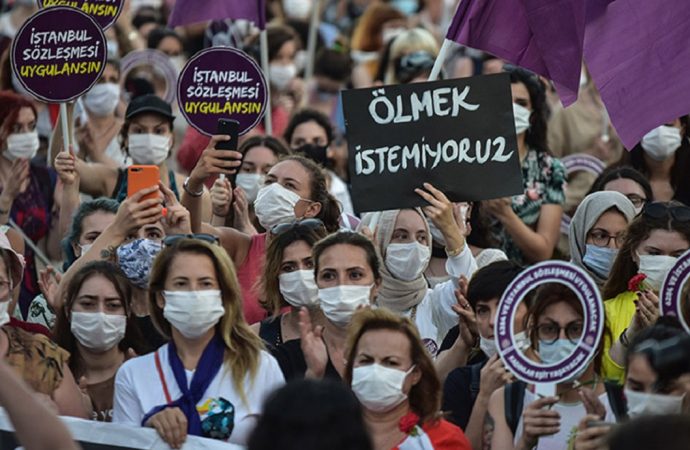
Turkey’s denunciation of the Istanbul Convention was criticized all around the world. As the word “why?” echoed throughout international and national media to question this, it would be enough to go back to the year before denunciation to seek possible answers to this question. As reported by Sibel Yükler (journalist); “During a meeting of his party’s Central Executive Committee in July 2020, Erdogan reportedly remarked, with reference to the convention, “if the people request it, then we will withdraw from it”[8]. The response supervened. The manifesto of the Ismailağa Congregation was promptly published on July 6, 2020, on their official website, and it superficially stated that the Istanbul Convention is against Islamic values[9]. Concerning the “interpreted” context of gender and gender-based violence as stated in the Istanbul Convention, a religious leader’s statement on the convention’s being against Islamic values can be contextualized with the discourse of the reasoning text of Turkey’s denunciation from the convention. As Cumper points out, the recognition of LGBTQIA+ rights particularly arouses the ire of religious leaders, and thus, the challenge appears to balance LGBTQIA+ rights and religious freedom (Cumper, p. 287). To move this point further, I personally think that even the mention of LGBTQIA+ rights seriously provoked or disturbed Turkey’s religious leaders or the representatives of the council. The importance and power arising from the presence of such a religious group manifest themselves from the serious assumption by President Erdogan quite soon[10].
Many cults and communities maintain their activities in Turkey[11]. According to the report prepared in 2018 by Prof. Dr. Esergül Balcı, an expert on educational policy, more than 2,6 million people has an organic bond with a cult or community, and 9% of the ones who identify themselves as a member of a cult or community reject the term “moderate Islam” and believe that the essence of Islam is jihad. The active cults in Turkey are sorted as Naqshbandi, Qadiriyya, Rifa’i, Mevlevi Order, and Khalwati Order, and the most common and active cult after the republic is Naqshbandi, and their activities are maintained in four different branches as Menzil, Ismail Aga, Iskenderpasa and Erenkoy Community[12] (Tosun, p. 675). “The break between the government and the FGM helped portray the İsmailağa community as more trustworthy and as more “Islam authentic,” unlike the FGM,” says Aviv (Aviv, 2018, p. 16). İsmailağa leader Mahmut Ustaosmanoğlu[13] is represented by Cübbeli Ahmet Hodja who warned society that, if being lesbian or gay is normalized, it would literally rain stones and many earthquakes will happen in his khutbah delivered in September 2021,[14] and he agreed with the press release of another religious foundation, Aziz Mahmud Hüdayi Foundation, about “preventing from being LGBT” in June 2022[15].
Though Erdoğan makes claims about a new package of legislative regulations for “Turkish family structure and LGBT” which is on the way, Turkey has already signed and ratified other treaties for protecting and preventing women, girls, and LGBTQIA+ individuals such as the Convention on the Elimination of All Forms of Discrimination against Women (CEDAW, ratified on Dec 1985) and the International Covenant on Civil and Political Rights (CCPR, ratified on Sep 2003). However, the data on independent press reports, NGOs, and LGBTQIA+ organizations, nationally and internationally do not take a step toward the rights of women and LGBTQIA+.
As reported by Amnesty International “(…) according to independent women’s rights organizations, 280 women were killed during the year as a result of gender-based violence and 217 women were found suspiciously dead”[16]. On the other hand, according to the ILGA Europe Annual Report of The Human Rights Situation of Lesbian, Gay, Bisexual, Trans and Intersex People in Europe and Central Asia 2022,[17] innumerable hate crimes occurred against LGBTQIA+ in 2021 in Turkey. After scrutinizing all reported human rights violations against LGBTQIA+ individuals in Turkey, the report concludes with an observation stating “compared with previous years, the data of 2021 has pointed to a clear and intense retroversion for LGBTI+ in terms of either single cases or legislation and policy-making. The table set forth by the report is parallel with the findings of organizations that carry out tracking either across the country or globally. This case shows that the human rights crisis in Turkey is felt by LGBTI+ in a gradually deepening way” (p.50)[18]. The rainbow flag, symbolizing LGBTI+, was formally made a cause for accusation during Bogaziçi agencies. On March 25, in Hisarüstü Neighborhood where the university is located, four juveniles were taken into custody on the grounds that they carried a rainbow flag. At the Bogazici Rainbow Case opened after the investigation, 12 students are still on trial. The rainbow flag is taken as criminal evidence[19]. Then, after pop singer, Gülşen was arrested and put under house arrest on account of the fact that she “insulted religious schools,” LGBTQ+ and religious values have been gradually used in the same discourse. While the Head of Communication in the Presidency of the Republic of Turkey assaulted the reputation rights of LGBTI+ with statements such as “homosexuality propaganda,” “corruption,” and “hideousness;” they popularized the related part of the talk including hate speech through the official Twitter account (ILGA).
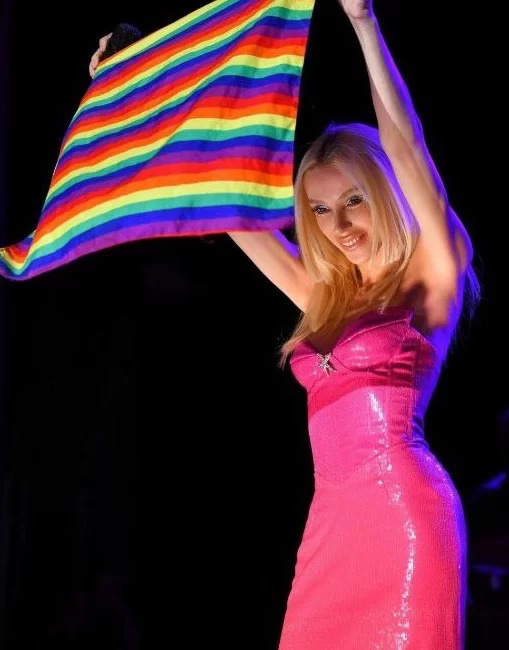
In his work in which he tries to reveal the positive and negative meanings of machismo, Mirandé discovers that machismo is mostly perceived negatively by the examples and primary positive and negative macho behaviors are detected (Mirandé, p.27-30). As Mirandé describes under the title authoritarianism, Male Dominant Authoritarianism would bring the need to look down on women by representing to exhibit chauvinist behaviors, putting forward double standards for men and women, and the authoritarian macho figure within the family (Mirandé, p.30)[21]. Analogically, Turkey’s gender is cis-male, its biological sex is male, and it has been enjoying the privileges arising from patriarchal powers just like the Republic of Turkey in which most family members belong to Sunni Islam and claim to be strictly heterosexual. No love would be authentic within a system that privileges men, diffuses Sunnism in the country’s culture by grounding on male dominance, being unable to realize the poison of male performances, and not criticizing masculinity’s destructive, tyrant, macho performatives. The social process of the performatives of religious discourse has been deconstructing the political language of the State. Hegemonic masculinity, which the study tries to describe in the beginning, has turned into state hegemony (Gramsci), becoming a mass function by almost destroying the individual, and it has repressed society with cultural hegemony (Adorno). The process that leads the State to withdraw from such a convention might be perceived as the tendency to target and criminalize LGBTQIA+ individuals and organizations with the denunciation process of the Istanbul Convention. While Erdoğan’s government has been working on a new legislative body within the constitutional amendment to prevent LGBTQIA+ individuals from ruining the Turkish family structure that is claimed to be more inclusive than the Istanbul Convention, the State should take precautions to protect the rights of LGBTQIA+ individuals and organizations.
Main Image Source: Kemal Aslan /AFP
Bibliography
Adorno, T. (2005). Minima Moralia. New York: Verso.
Austin, J.L. (1975). How to do things with words. The William James lectures. Harvard University Press.
Butler, J. (2006). Gender Trouble: Feminism and the Subversion of Identity. Routledge.
Butler, J. (1993). Critically Queer. GLQ, 1. (s. 17–32).
Butler, J. (2011). Bodies That Matter: On the Discursive Limits of ‘Sex’. Routledge.
Connell, R.W. (2005). Masculinities. California: University of California Press. Second Edition.
Connell, R.W. (1987). Gender and Power: Society, the Person, and Sexual Politics. Stanford University Press. 1st edition.
Foucault, M. (1982). Archaeology of Knowledge and the Discourse on Language. New York: Vintage.
Gramsci, A. (2011). Prison notebooks. New York: Columbia University.
Gunn, J. (2013). Secularism, The Secular and Secularization in Trends of Secularism in A Pluralistic World (ed. Contreras, J., Codes, R.M.M) Frankfurt: Vervuert.
Horzum, Ş. (2018). Erkek ve erkeklik çalışmaları sorunsaldan kurumsala. (s. 75-101). Amasya Üniversitesi Sosyal Bilimler Dergisi Cilt 2, Sayı 4. orcid.org/0000-0003-4114-0387.
Mirandé, A. (2010). “Macho”: Contemporary conceptions. (s. 26-37). In Men’s lives. (Ed: M.S. Kimmel & M.A. Messner). Boston: Pearson.
Sedgwick Kosofsky, E. & Parker, A. (1995). Performativity and performance. London: Routledge.
Jagose, A. (1996). Queer Theory: An Introduction. New York: NYU Press
[1] See: https://www.gazeteduvar.com.tr/erdogan-kilicdaroglu-pas-verdi-bizim-de-golu-atmamiz-lazim-haber-1583920, Date accessed: 28.10.2022
[2] See: https://www.gazeteduvar.com.tr/kilicdaroglu-saray-icin-turnusol-dedi-ak-partiden-tepki-geldi-haber-1583437, Date accessed: 28.10.2022
[3] The emphasis is mine.
[4] In the rest of his statement, he said that they would make changes towards family structure and LGBTI+ besides turban with the constitutional amendment.
[5] Cisgender refers to those whose sex assignment at birth conforms to their self-identity as a man or woman. The term is often used to mean the opposite of transgender.
[6] In dictionaries, drag is identified as the person who adopts exaggerated feminine attitudes and social femininity roles for entertainment and fashion and wears women’s clothes, and drag queen personalities are generally carried out by men (Wikipedia). However, this statement does not exactly fulfill the definition of drag. One should not be appointed to be/do drag, or biological sex should not be male. A woman, an individual who identifies themselves as a woman, non-binaries, or asexual individuals can drag; the important point is the one who does drag leaves their own behavioral and visual image. The one who creates the persona can change aspects, manner, and behavior to their heart’s content while doing drag.
[7]See: https://www.iletisim.gov.tr/turkce/haberler/detay/turkiyenin-istanbul-sozlesmesinden-cekilmesine-iliskin-aciklama, Date accessed: 28.10.2022
[8]See: https://tr.boell.org/en/2022/06/24/how-lgbt-individuals-were-criminalized-withdrawal-istanbul-convention, Date accessed: 28.10.2022
[9] See: ““License to declare war” against Islamic values”: https://yetkinreport.com/en/2020/07/09/the-istanbul-convention-vs-an-islamist-congregation/: “Content-wise, this Convention paves the way for vices such as homosexuality, which is condemned by Allah (May He be glorified) and His Prophet (May Allah’s peace and blessings be upon him), imposes missions on women that are antithetical to their purpose of creation, and so seeks to destroy our moral structure and the family-based civilization that our ancestors handed down to us.”
[10] They expressed special thanks to Erdoğan: https://www.aykiri.com.tr/istanbul-sozlesmesi-nin-feshedilmesi-sonrasi-tarikatlardan-ust-uste-tesekkur-aciklamalari/10134/
[11] The law on the closing of dervish lodges and zawiyahs enforced by Mustafa Kemal Ataturk on November 30, 1925, was accepted by the Grand National Assembly of Turkey.
[12] According to Balcı’s fieldwork, there are essentially 30 cults and 400 branches of them in Turkey. The number of clearly active lodges in Istanbul is 445.
[13] Who died on June 24, 2022.
[14] To watch the whole khutbah: https://www.youtube.com/watch?v=rBSLQagexnA&ab_channel=C%C3%BCbbeliAhmetHoca
[15] In this press release, it is underlined: “The ones who say, ‘it is not our home that’s on fire’ and keep sleeping will recognize the seriousness of the danger when they are exposed to poisonous smoke, but it will be too late. It is now a must for the public, private sector, civil society and everyone with good sense to take serious precautions against the daring seduction movements that try to cover ‘the illness of dishonor’ with masks written ‘honor.’” We must never forget that little organized structures can cause fatal injury on unorganized crowds. Besides, LGBT lobby has turned into a poisonous and multi-directional network that is organized throughout the world and supports each other.” See: https://www.hudayivakfi.org/insanligin-serefine-kastedenlere-karsi-uyan-uyandir-ve-dur-de.html
[16] See: https://www.amnesty.org/en/location/europe-and-central-asia/turkey/report-turkey/
[17] ILGA Europe Annual Report of The Human Rights Situation of Lesbian, Gay, Bisexual, Trans and Intersex People in Europe and Central Asia 2022 published on 14th of February 2021
[18] See: https://kaosgldernegi.org/images/library/lgbti-larin-i-nsan-haklari-raporu-2021-web.pdf
[19] See: https://www.amnesty.org.tr/icerik/bogazicigokkusagi
[20] See: https://www.iletisim.gov.tr/turkce/haberler/detay/turkiyenin-istanbul-sozlesmesinden-cekilmesine-iliskin-aciklama, Date Accessed: 28.10.2022
[21] Machismo can seem like masculinity performance itself; however, evaluating it under a separate title in terms of conceptualization and performatives can help distinguish it from other performatives. In his article “Macho: Contemporary Conceptions” (1997), Alfredo Mirandé talks about the origin of the word macho and how it is conceptualized. Mirandé explains that the word macho, which takes place in Mexican folk songs (corridos) until the 1940s, is generally associated with Mexican and Latin culture while it is used to describe the strong, masculine and sex appeal with a positive attitude in order to portray rock stars and male sex symbols in television and movie industries within American pop culture, and he continues to say that while “anglo” macho has these positive characteristics when it is applied to Mexican or Latin American culture, macho changes as a term to describe the negative characteristics such as patriarchal and violent and it prioritizes male dominance. The Mexican term macho suppresses women, while Anglo-Saxon macho seduces them (Mirandé, p.27). It is possible to say that, specific to Turkey, the term macho is used in its Mexican context.
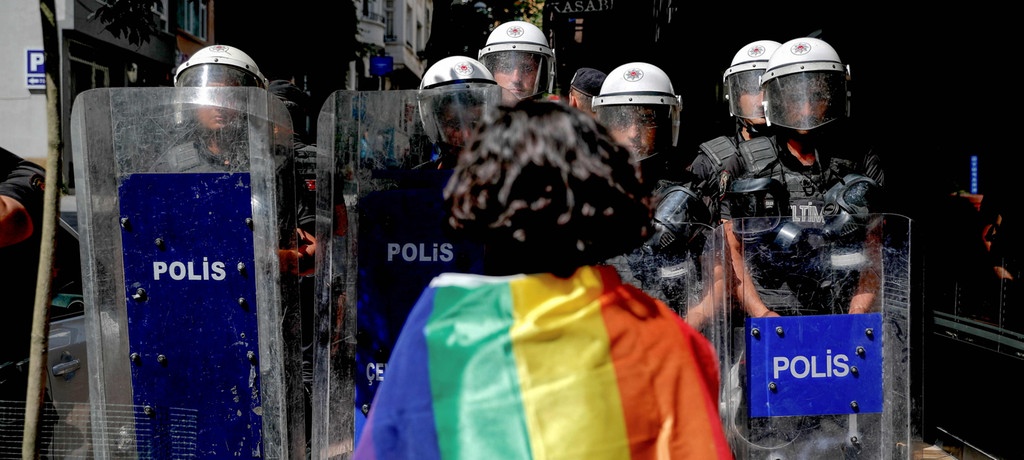
Be First to Comment